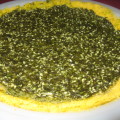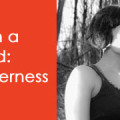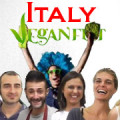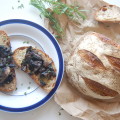One intrepid dyke asks the age-old question: Do you eat meat?
By Sarah E. Brown
I recently had dinner with a lesbian friend of mine at a chic vegan restaurant in downtown San Francisco. While we were midway through our meal of lime-marinated oyster mushrooms and tofu-ricotta lasagna, my friend dunked her toasted crostini in sun-dried tomato pesto and was about to take a bite when she blurted out, “Do you see how many chicks are in this place? Why are so many of us vegan?”
Her question was one that I have fielded many times before. It is undeniable that both vegan and lesbian communities draw from each other, both for support and membership. Lesbian-oriented events in big cities are almost always catered vegan, or at least provide vegan options. Geographically speaking, communities with significant lesbian populations, such as Portland, Ore., Berkeley, Calif., and Brooklyn, N.Y., are also well-known vegan havens. Yet there still seems to be a lot of misunderstanding both within and outside the lesbian communities.
Why are there so many queer female vegans? While each person comes to veganism on her own terms, there are great incentives for women of all sexualities to be vegan. To understand the significance of the vagitarian-vegetarian connection, it is necessary to see the interconnected relationships among veganism, lesbianism and feminism.
In her essay “Pepperoni or Broccoli? On the Cutting Wedge of Feminist Environmentalism,” feminist Joni Seager argues that feminism and animal rights are directly related and that their goals are inextricably intertwined. Seager proposes that animal rights discourse reveals the problematic nature of concrete identity categories.
Many feminists have also advocated this approach to subvert traditional patriarchal gender roles.
Seager also speaks of a similarity in the ways in which both animals and women have been sub-ordinated: “Debates about animals unmistakably echo familiar racist and sexist ideologies about ‘natural affinities,’ categories authorized by nature, destinies inscribed in biology, and ‘scientific proofs’ of the limited capacities of the ‘other’ that have rumbled through the centuries to justify slavery [and] the oppression of women.”
Like other feminists, Seager suggests we critique structures that are simultaneously oppressive to both women and animals, arguing that their oppressions are interrelated.
In understanding that one can and must be interested in animal rights and feminist issues concurrently, it is clear to me that efforts to increase rights for animals and women of all sexual orientations are not mutually exclusive. Just as one person’s choice to invest in sustainable energy sources affects the global environment, the positive implications of veganism extend way beyond the individual or family dinner table. Eating and using animal products reinforces the universal oppression of women—lesbian or otherwise. Thus, negotiating both a vegan and a lesbian identity can provide a real opportunity for positive change.
So the next time you find yourself dating an herbivore, perhaps the real question you should be asking yourself is, “Why aren’t I a vegan?” ■
This article was originally published in November 2007 issue of Curve Magazine






2 Comments
dancingvegan (3 comments)
July 10, 2009 at 2:53 pmOMG!! I’ve eaten at that restaurant in San Fran.!!! Millenium!! It’s SO SO yummy!!! If ever you go to San Fran., even if you are not veggie/vegan you’ve got to check this out!!! I have their cookbook – truly amazing artistic food!!
Chia (324 comments)
July 21, 2009 at 8:49 pmThanks for this article.
Veganism and lesbianism and feminism – it’s all connected.
When one is oppressed, no one is free.
Makes me think of the chant, “Hey hey, ho ho, patriarchy has go to go!”